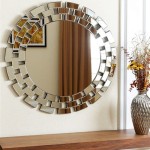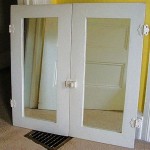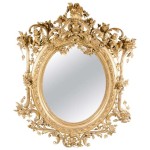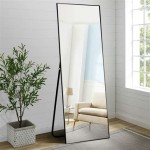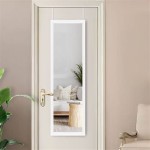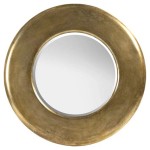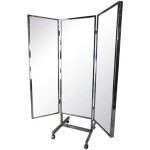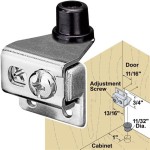How Big Should a Mirror Above a Fireplace Be?
Determining the ideal size of a mirror to place above a fireplace is a critical design decision that impacts the overall aesthetic of a room. The mirror's dimensions must be carefully considered in relation to the fireplace, the surrounding wall space, and the room's existing architectural features. A poorly sized mirror can appear out of place, detracting from the fireplace's potential as a focal point and disrupting the room's visual harmony. Conversely, a well-proportioned mirror can amplify light, create a sense of spaciousness, and enhance the fireplace's decorative appeal.
Several factors influence the optimal mirror size. These include the fireplace's dimensions, the height of the ceiling, the room's overall scale, and the desired style. There are no universally applicable formulas, but understanding the principles of proportion, balance, and visual impact is crucial for making an informed decision. This article provides a comprehensive guide to these principles, offering practical considerations and design insights to assist in selecting the most appropriate mirror size for a fireplace.
Considering Fireplace Dimensions
The fireplace itself serves as the foundational element when determining the appropriate size of the mirror. The mirror should ideally be scaled proportionally to the fireplace opening and the mantel. A general rule of thumb suggests that the mirror's width should not exceed the width of the fireplace mantel. Exceeding this width can create an unbalanced look, making the mirror appear too large and overpowering the fireplace. Conversely, a mirror that is considerably narrower than the mantel might seem insignificant and fail to make a visual impact.
The height of the mirror should also be carefully considered in relation to the fireplace's height. A common guideline is to choose a mirror that is approximately two-thirds to three-quarters the height of the fireplace. This proportion typically creates a visually pleasing balance. However, if the room has particularly high ceilings, a slightly taller mirror might be necessary to fill the vertical space and prevent the mirror from appearing dwarfed by the surrounding architecture.
It's important to account for the style of the fireplace. An ornate, heavily detailed fireplace might benefit from a simpler, less visually dominant mirror to avoid overwhelming the space. A minimalist fireplace, on the other hand, could handle a more elaborate or larger mirror to add visual interest and create a focal point. The mirror's frame, or lack thereof, should also complement the fireplace's style and materials.
Consider the visual weight of the fireplace. A dark-colored or heavily textured fireplace might necessitate a larger mirror to balance the overall visual impact. A light-colored or streamlined fireplace might require a smaller, more delicate mirror. Paying attention to these details ensures that the mirror and fireplace work together harmoniously to create a cohesive and aesthetically pleasing focal point.
Accounting for Room Size and Ceiling Height
The room's dimensions and ceiling height play a significant role in determining the appropriate size of the mirror. In a small room, a smaller mirror is generally more suitable. A large mirror in a confined space can appear overwhelming and disrupt the room's proportions. Conversely, a tiny mirror in a large room might get lost and fail to make a noticeable contribution to the decor.
Ceiling height is a particularly important consideration. In rooms with high ceilings, a taller mirror above the fireplace can help to visually ground the space and prevent the ceiling from feeling disproportionately high. A shorter mirror in a room with high ceilings could appear inadequate and fail to utilize the available vertical space effectively. If the room has low ceilings, a taller mirror, while seemingly counterintuitive, can create the illusion of height by drawing the eye upwards.
Generally, larger rooms benefit from larger mirrors. The increased wall space demands a more substantial decorative element to avoid appearing empty or sparsely decorated. In these settings, a larger mirror can serve as a significant focal point, enhancing the room's overall aesthetic. However, it is still important to maintain proportionality. A mirror that is too large in relation to the fireplace can detract from the room's balance, making the fireplace appear smaller and less significant.
The distance from which the mirror will be viewed is also relevant. In larger rooms where the fireplace and mirror are viewed from a greater distance, a slightly larger mirror can be more effective in creating a visual impact. In smaller rooms where the viewing distance is shorter, a smaller mirror can suffice.
Considering Mirror Style and Functionality
Aside from size, the style and functionality of the mirror also influence the overall aesthetic. A decorative mirror with an ornate frame adds a different visual impact compared to a simple, frameless mirror. The choice of frame should complement the fireplace's style and the overall decor of the room. A gilded or intricately carved frame can add a touch of elegance and formality, while a simple wooden or metal frame can create a more rustic or contemporary look.
The shape of the mirror is another important consideration. Rectangular mirrors are a classic choice and generally work well with most fireplace designs. However, oval, round, or even uniquely shaped mirrors can add visual interest and create a more distinctive look. The shape of the mirror should complement the shape of the fireplace and the surrounding architectural features.
Functionality is equally important. Mirrors serve not only as decorative elements but also as tools for reflecting light and creating the illusion of spaciousness. A strategically placed mirror can significantly brighten a room by reflecting natural light from windows or artificial light from lamps. In smaller rooms, a mirror can create the illusion of more space, making the room feel larger and less confined. The mirror's reflective properties should be considered when determining its placement and size.
Consider a beveled edge on the mirror. A beveled edge creates a subtle visual detail that adds depth and dimension to the mirror. It also enhances the mirror's light-reflecting capabilities, contributing to a brighter and more spacious feel. However, a beveled edge might not be suitable for all styles. In some cases, a clean, straight edge provides a more contemporary and streamlined look.
Finally, consider the visual weight of the mirror's frame. A heavy, dark-colored frame can visually anchor the mirror and create a strong focal point. A light, delicate frame can create a more subtle and understated look. The choice of frame should be carefully considered in relation to the overall design of the room.
Ultimately, determining the appropriate size of a mirror above a fireplace requires a thoughtful evaluation of various factors, including the fireplace's dimensions, the room's size and ceiling height, and the mirror's style and functionality. By carefully considering these aspects, one can select a mirror that not only enhances the fireplace's aesthetic appeal but also contributes to the overall visual harmony of the room.

Things To Know Before Hanging A Mirror Above The Fireplace
:max_bytes(150000):strip_icc()/271342800_619280975946855_5866172257895318662_n-f6b2756c1768481b9b258f56fe44d13a.jpg?strip=all)
Design Guide To Putting A Mirror Over The Fireplace

5 Top Tips For Hanging Mirrors Above Fireplaces Living Fires

Mirror Over The Mantel What Size To Get Laurel Home

Mirror Over The Mantel What Size To Get Laurel Home

Mirror Over The Mantel What Size To Get Laurel Home

35 Mirror Above Fireplace Ideas For A Beautiful Look Nikki S Plate

The Best Fireplace Mirror Ideas For A Simple Attractive Space

35 Mirror Above Fireplace Ideas For A Beautiful Look Nikki S Plate

35 Mirror Above Fireplace Ideas For A Beautiful Look Nikki S Plate
